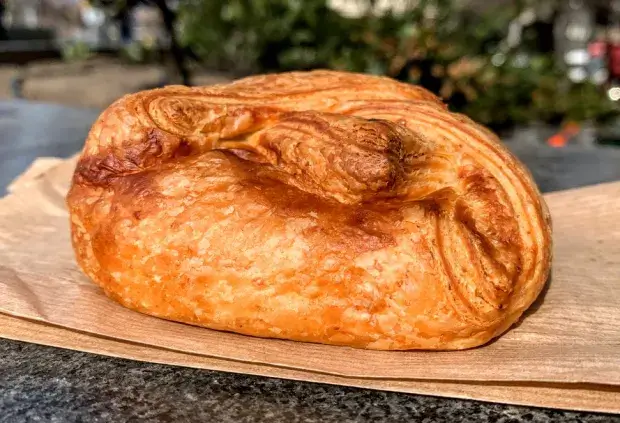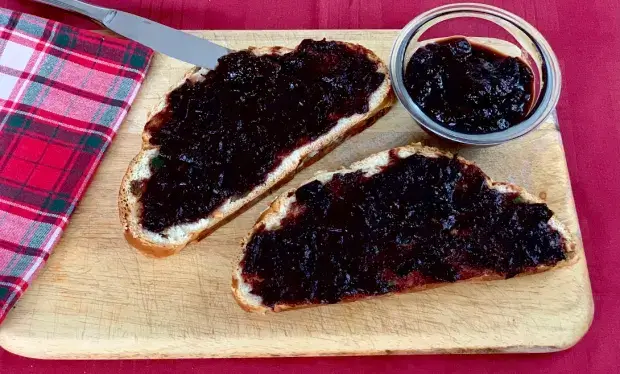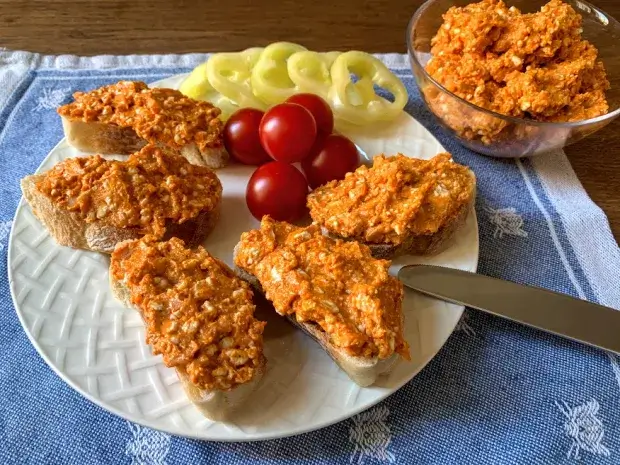From lángos to goulash to chicken paprikash — learn about the history of Hungarian food and the country’s top dishes.
Hungarian food 101
Hungarian food is a reflection of Hungary’s continental climate (cold winters, hot summers), the countryside fare, and the influences of neighboring countries and ethnic minorities. For example, while Hungarians have been eating some form of goulash for hundreds of years, dishes like stuffed peppers, schnitzel, and cholent have gradually seeped into the mainstream thanks to Ottoman, Austrian, and Jewish influences, respectively.
The culinary high point of medieval Hungary was the 15th-century reign of renaissance king Matthias. Through his Naples-born wife, Beatrice, Matthias hired skilled foreign chefs who whipped up elaborate feasts in the royal palace that could rival those in Italy at the time.
While the occupation by Ottoman Turkey ended Hungary’s independence for nearly two centuries, it also brought forth important culinary innovations — stuffed vegetables, some dessert dishes, and coffee appeared in this time. This was also when New World produces like beans, squash, corn, potato, tomato, and paprika first arrived in Hungary. In fact, paprika (capsicum) went on to revolutionize Hungarian food after local farmers cultivated a host of subspecies ranging from sweet to scorching hot.
Meanwhile, the delicate French cooking techniques began to spread into the households of the aristocracy and later the whole country, taming the somewhat crude and spicy Hungarian peasant fare (for example roux replaced bread as a thickener). This yielded a more refined yet still distinct cooking style that’s considered the basis of modern Hungarian food.
Given the small size of Hungary, regional differences are scant. One notable exception is Transylvania, part of Romania today but with a sizable Hungarian community. There, instead of paprika, herbs and spices like ginger, tarragon, thyme, rosemary, summer savory, and juniper have remained essential seasonings. Transylvania is also known for its corn-based dishes like polenta and sheep’s milk cheese.
Lunch in Hungary usually begins with a soup. Unike in many Eastern European countries, few soups have a characteristically sour taste. At the top of the soup hierarchy sits the flavorful húsleves, literally meat soup, usually made from long-simmered beef or poultry. No wedding reception is complete without it. The everyday soup of choice is usually determined by the season: There might be a hearty bean soup studded with smoked ham hock (Jókai bableves) in the cold months, and a light fruit soup in the summer.
Hungary’s climate is suitable to cool and warm-season vegetable crops alike, so there’s both things like carrots, beets, kohlrabi, cabbage, cauliflower, but also tomatoes, bell peppers, green beans, and summer squash. Rather than reducing them to boiled or steamed side dishes, seasonal vegetable stews thickened with sour cream (főzelék) often appear as a main course. Before vegetables became available year-round, most people got their vitamins and carbs in the form of sauerkraut and potatoes in the cold months.
The concept of a salad course doesn’t exist in Hungary. Instead, people accompany their main course by a small plate of seasoned vegetables, usually shredded cabbage, cucumbers, beets, or tomatoes. This is also the case during the winter, when they eat them pickled (savanyúság).
Meat is fundamental to Hungarian food. The options span poultry, beef, and to a lesser extent game and game birds, but pork is most prevalent. Pork turns up in myriad forms. A paprika-laced roast sausage paired with mustard and a slice of crusty bread is a popular everyday meal, but higher-end restaurants also serve roasted mangalitsa, the curly-haired breed of heritage pork known for its flavor-rich marbled meat. Historically, lard was the main cooking fat but it’s now eclipsed by vegetable oils.
Before the use of refrigerators, the main source of protein in people’s diets came from preserved meats which are still popular. Szalonna and kolbász are the two main categories, both of them traditionally made during the annual winter pig slaughter. The premium téliszalámi — a smoked, fermented, and aged sausage laced with herbs — is rightfully regarded as a national treasure.
Hungary is a landlocked country. This doesn’t mean you can’t find a decent grilled shrimp cocktail these days, but freshwater fish like carp (ponty), catfish (harcsa), and, less commonly, trout (pisztráng) and pike-perch (fogas), are likely fresher. Sadly, long gone are the days when beluga sturgeons swarmed in the Danube. And while fish isn’t the strongest suit of Hungarian food, the local fish soup — fisherman’s broth or halászlé — is worth trying.
For centuries, noodles have been central to Hungarian food. People would eat them on days of fasting, several times a week. They appear in many soups, but more interestingly, there’s a whole category of sweet (!) pasta dishes: regular noodles coated in ground poppy seeds (mákos tészta), ground walnuts (diós tészta), or toasted semolina (grízes tészta) and powdered sugar. People usually eat them as a second course after a hefty soup.
Also notable are the countless dessert dishes that originated in Austria-Hungary and are still widespread across the successor states. Examples include the kaiserschmarrn (császármorzsa), the jam-filled potato dumplings (szilvás gombóc), the poppy seeds bread pudding (mákos guba), and the sugary yeast rolls (aranygaluska). As with sweet pastas, they’re served warm and usually eaten in place of a main course. The most common dessert in Hungary is palacsinta, a crepe-like unyeasted pancake rolled with fruit jam, túró, or cinnamon sugar.
Like Austria, Hungary is a cake-superpower. Many of the traditional cakes feature ground poppy seeds, ground walnuts, and chestnut paste, sometimes entirely replacing wheat flour. Note that restaurants in Hungary don’t serve cakes; instead you’ll have to visit a specialized pastry shop (cukrászda) to try a classic Dobos or Esterházy torte.
Hungarian cheeses don’t exactly set the world on fire, in part because unlike in France and Switzerland, there’s little available mountain pasture in the country for cows to graze on (Hungary’s per capita milk consumption is also one of the lowest in the EU). But sour cream (tejföl) appears in many foods. With a hint of tartness, it lends a pleasant kick and a creamy consistency to dishes. Also popular is túró, a snow-white, fresh, unripened curd cheese similar to cottage cheese. Túró is highly versatile, appearing in both sweet (túrós batyu) and savory (túrós csusza) classics, and also in Hungary’s iconic candy bar, the Túró Rudi.
Historically, Hungary has been a wine-drinking rather than a beer-drinking country, with Tokaj in the northeast being the top wine region. The communist era (1947-1989) did no favors to the reputation of Hungarian wines, but today a new generation of ambitious winemakers are committed to putting the country back on the radar of oenophiles.
My content is free and I never accept money in exchange for coverage. But this also means I have to rely on readers to maintain and grow the website. If you’re enjoying this article, please consider supporting Offbeat.
The 85 Essential Hungarian Dishes
Dear reader, before you start questioning the origins of the below dishes, bear in mind that regional foods influence one another in all parts of the world. For example, the goulash has become as much a standard in Austria as did the Wiener schnitzel in Hungary. If anything, this is a beautiful cultural exchange through food, enriching the cuisine of both countries.
In Budapest, you’ll find many of the below dishes in traditional Hungarian restaurants, and also in étkezdes, which are cheap, unfussy, lunch-only restaurants. Note that some of the items are seasonal, such as the wintry cabbage rolls, so they may not be served year-round.
#1 – Túrós batyu: Like in Italy, France, and Scandinavia, many people in Hungary start their days with a morning pastry instead of a full breakfast dish. The stuffing of sugary túró, a snow-white fresh curd cheese, lends a beguiling sweet-tart flavor to this palm-sized breakfast snack, which is available in almost any bakery and which evolved from the medieval túrós béles. Back then, people ate it only on special occasions.
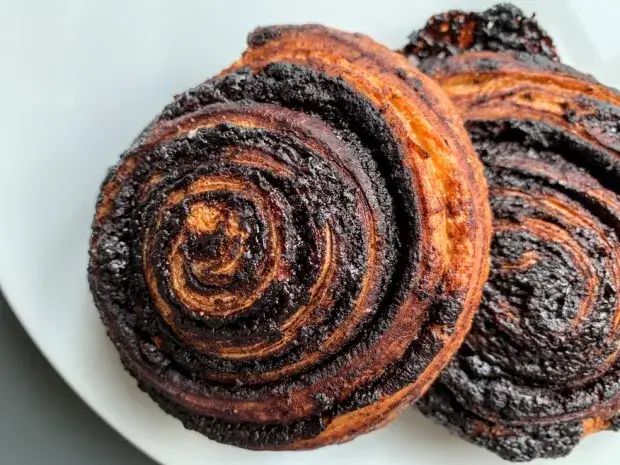
#2 – Chocolate bun (kakaós csiga): Apart from the túrós batyu, above, kakaós csiga is the other beloved morning pastry in Hungary. If you have a sweet tooth, you’ll find this rich chocolate bun shaped in a spiral to be a real treat, especially if you eat it while still warm. My favorite in Budapest: Pékműhely 2.
#3 – Plum jam (szilvalekvár): Be it a simple topping to a toasted bread, a rich garnish to foie gras, or a filling of palacsinta, fruit preserves appear in countless Hungarian dishes. The varieties are endless — peach, raspberry, strawberry, sour cherry, etc. — but it’s the plum jam (szilvalekvár) that goes back furthest. Before sugar became cheap and widespread in the 19th century, people made szilvalekvár without it, laboriously stirring the bits of fruit for 12-14 hours into a gel over fire.
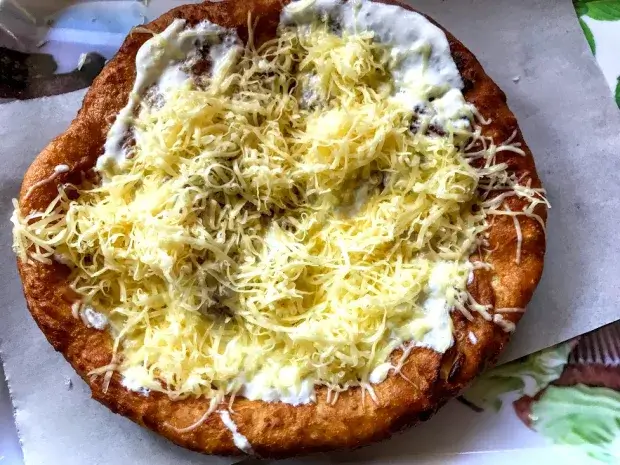
#4 – Lángos: Many Hungarians associate this disc of deep-fried bread dough with summer vacations spent at Lake Balaton, but thankfully lángos is available year-round. At its best, the crispy, golden crust yields to a soft and steaming inside (historically, lángos was a byproduct of bread baking at home). For the most memorable experience, try one rubbed with garlic and topped with sour cream and grated cheese.
#5 – Liptauer (körözött): Named after the curd cheese of Liptov, in today’s Slovakia, Liptauer is an orange-hued spread favored by people across the former Austro Hungarian Empire. While many variations exist, the mixture almost always includes sheep’s milk curd cheese (juhtúró), butter, paprika, minced onions, and caraway seeds. If in doubt, cold lager is always a good companion to körözött-slathered sourdough. Recipe.

#6 – Cured sausage (kolbász): Cured meats are dear to the hearts of Hungarian people and perhaps none more so than kolbász, which they traditionally prepared during the winter pig slaughter. Kolbász consists of a paste of meat, fat, and a paprika-heavy spice blend. The mixture is stuffed into a tubular casing — usually using the pig’s intestine — and then smoked and dried. Sliced kolbász is highly versatile, appearing in many Hungarian classics, for example layered potatoes (rakott krumpli), and also as sandwich toppings. My favorite in Budapest: Most butcher shops in the Great Market Hall sell it. Feel free to ask for a sample first.
#7 – Szalámi: Traditional salami is a relatively recent type of preserved sausage in Hungary, dating back to the 19th century. Compared to kolbász, above, szalámi is thicker, aged longer, and usually made without paprika, hence the absence of an orange-red hue to it. A premium category is téliszalámi, recognizable by a white protective mold that grows on its surface during drying. Two historic companies, Pick and Herz, are still the main producers. Sliced szalámi works both as a snack and as a sandwich topping. My favorite in Budapest: Most higher-end grocery stores sell it.
#8 – Szalonna: “Szalonna” is an umbrella term for all cuts of preserved pork that come from right under the animal’s skin, be it fatback, pork belly, or jawl. Most szalonna is salted and smoked, but treatments vary by region. To this day, szalonna is a cherished, energy-rich sustenance across Hungary; people either cook it into dishes for a flavor boost or simply eat it as is with a slice of bread and vegetables. My favorite in Budapest: Most butcher shops in the Great Market Hall sell it. Feel free to ask for a sample first.
#9 – Bread spread with lard (zsíroskenyér): The tradition of spreading flavorful fat on crusty bread is alive and well in Hungary, too. While northern Europe has buttered toast, in Hungary creamy pork fat (lard) is the usual topping of choice. Sprinkled with rings of onion and a hint of paprika, the zsíroskenyér is a popular bar snack as it pairs well with draft beer and is also wallet-friendly. A few places also serve a VIP version made with Mangalitsa lard. My favorite in Budapest: Grinzingi, an old-school, unfussy neighborhood joint in downtown Budapest.
#10 – Fried fatback (töpörtyű & pörc): Morsels of fatback fried to a golden, crispy brown may not be for the faint of heart but they’re delicious. Most butcher shops in Hungary make them from both pork and goose fat (schmaltz). Nibble at töpörtyű as they come or grab some red onions and a fresh slice of bread to pair. Pörc is a similar product, using pork belly instead of fatback (think chicharrón).



